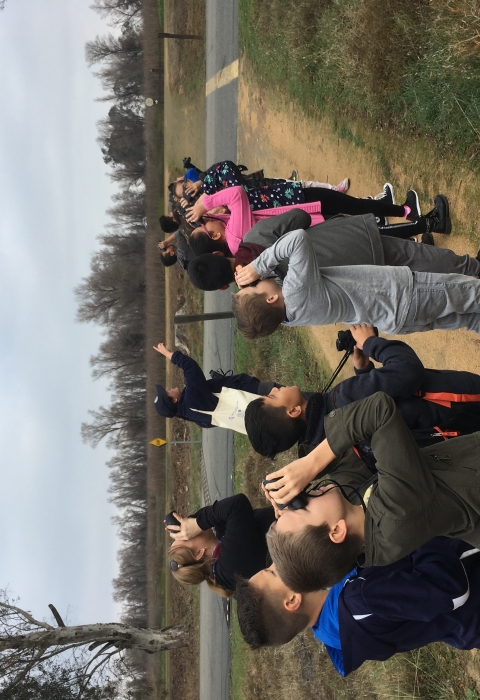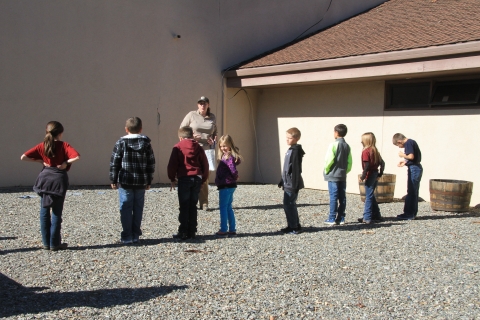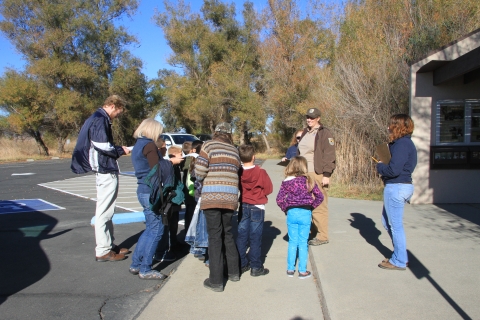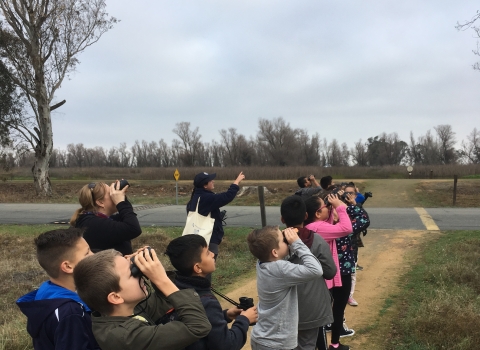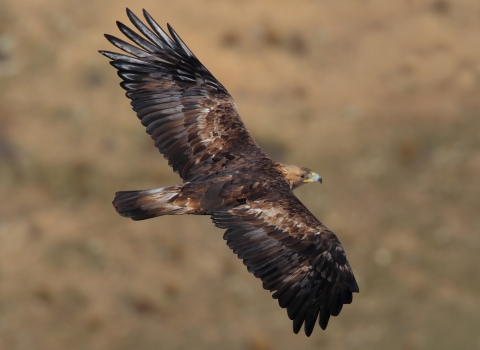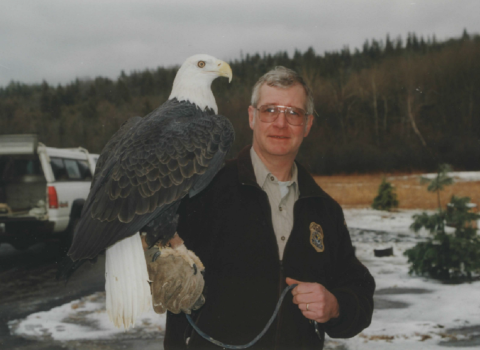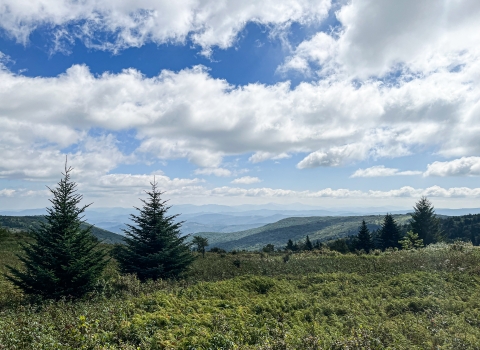Click on Environmental Education to return to Environmental Education home page.
Education Guidelines
Our education programs are designed to provide fun, interactive, and outside learning to students. The Complex receives approximately 200,000 visitors and over 1,000 students participate in our programs annually, which keeps our small staff very busy from October – March. Since a lot of refuge time and resources go into our programs, we want to ensure that groups are respectful of our commitment and that they arrive on-time. Because of this, groups that do not follow the guidelines below will not be able to receive programs the following year.
Scheduling
Programs open for scheduling on August 10. Program availability is from the third week in October through March. The highest concentration of waterfowl on the refuge is from early November through early December – however, we do not know what the birds will do or what the weather will be.
Completing and submitting a reservation form is needed to confirm your date (email provided in reservation form). Staff will confirm your field trip date via email, and will mail you a confirmation form, vehicle passes, and additional information after receiving your reservation. If you do not receive a confirmation form at least a week prior to your field trip, please contact us right away.
Visiting in the rain is not always fun. Birds are usually not on the refuge in large numbers, it is hard to see out of a wet window, and inside building space is tight. If wet weather is forecasted for your trip, we are willing to work with you to reschedule your trip, based on availability. Contact us as soon as you can the morning of your trip to reschedule your visit (contact information is provided in your confirmation packet and in staff email signatures).
Communication
We work with many different schools and groups every year. We want to make it a great field trip for your group and simple for you to schedule. We ask that only the lead teacher/group leader communicate with the Complex to minimize confusion and getting wires crossed. Please share the information we send you with other attending teachers, chaperones, principals, driver, and necessary personnel.
Materials
The environmental education budget is small and purchasing new materials is hard. Please be respectful of the materials and do not graffiti, purposely break, throw, or improperly handle equipment.
Binoculars are fun and exciting for the students to use on the Wetland Walk Trail. Some tips: put the strap around your neck, do not walk and look through the binoculars at the same time, and do not look at the sun. Since all of our heads are different sizes, students will have to move the binoculars in and out to fit their heads. Chaperones can help during the binocular section since staff can only help one student at a time.
Respect for Educator(s)
For students to get the most out of the programs, educators need to have the opportunity to present all the information built into each of the programs. To prevent any information or activities from being cut from programs, we ask that teachers and chaperones help students stay focused and listen to the educator’s instructions. Student nametags (clear and large enough to read) help staff personalize the trip.
When we have them as part of our staff, our visitor services assistants (interns) lead the programs. They are often learning about presenting, class management, and refuge information. Your help during the program with class management is greatly appreciated and necessary for a positive learning experience for your students. Your post program evaluations assist the interns in learning and improving their skills.
Respect for the Refuge
At National Wildlife Refuges, wildlife comes first. Refuges provide habitat for wildlife and we can respect wildlife and habitats through the following ways:
- Pack it in, pack it out. Plan to bring a trash bag with you to collect any trash created by your group and dispose of it when you get back to school (the refuge has limited trash cans). Thank you for helping check to make sure no food gets left behind if you eat lunch at the refuge.
- Leave things where you find them. Leave rocks, feathers, sticks, etc. on the ground (collecting trash or litter is the exception). We recommend not having every student take brochures. Instead, you can make copies of any maps provided in your education packet, or sharing the PDFs of brochures ahead of time with chaperones and other teachers (scroll down to the VISITOR QUICK-LINKS table on the homepage, and reference the "Trail Maps/Visitor Leaflets" column).
- Stay in designated visitor areas. Staying on trails and not walking in the road by the parking lot keeps everyone safe and allows other visitors and the wildlife here to move around the space. When on the auto tour, stay in the bus unless you're at a designated Park-and-Stretch area (more info below). When at the refuge, please stay as a group. If a student needs to use the restroom, please have a chaperone accompany the student.
- Use quiet voices. We know it's really exciting to be out of school on a field trip, and this is a wild place and you never know what you will see! Loud voices can startle wildlife, which disrupts their ability to rest, eat, make homes, and more. The quieter we are, the more likely we are to see wildlife and observe what they're doing on the refuge.
From November to March, the refuge tends not to have any biting insects. If you have concerns, please contact staff.
In September and October, and on warm winter days, wasps will congregate at buildings and restrooms. They are looking for overwintering areas. Staff try to minimize them, but they will still be present on the refuge.
Respect for Each Other
Students should be respectful to their classmates, teachers, chaperones, educators, and wildlife during their time on the refuge. Teachers and chaperones are responsible for student behavior, and should keep everyone together as a group.
Auto Tour/Platform
The Sacramento NWR auto tour is six miles and tends to take at least 1 ½ hours if you are eating lunch at the platform. The best driving speed is 10-15 miles per hour. Visitors must stay within their vehicles and only get out at the park-and-stretch areas.
Treat the auto tour like a road. Use vehicle pull-outs to allow other vehicles to pass. Everyone should wear a seatbelt and keep their hands, heads, bodies inside the vehicle, and doors closed. Driving with the door open, head out sunroofs or windows, riding on top of the vehicle or in the back of a pickup truck (even if it has a cover or topper) is prohibited. Staying in the vehicle keeps the waterfowl close to the road so you're more likely to see them.
The auto tour road can be soft with wet weather. Keep your vehicle in the middle of the road so you don't get stuck (the grass can be deceivingly wet).
Staff typically are not on the bus with the groups. For younger students, staff suggest pointing out wildlife and just enjoying the drive without strict learning.
Prior To Your Visit:
Review your confirmation form!
• Share these guidelines with chaperones and let them know what their responsibilities are.
• Share the location map with drivers. Google and various digital maps do not always put you in the correct location.
Let students and chaperones know what to bring, leave at school, and what to wear:
• Most of the activities are outside and it can be windy at the refuge.
• Wear warm layered clothes
• Wear jackets and long pants (shorts tend not to be appropriate during winter)
• Wear sturdy, closed-toed shoes
• Make name tags for students and chaperones. We don’t always know a parent from a teacher.
Technology:
• Leave games, music devices, etc. at home or school.
• Cameras and cell phones are okay if they aren't a distraction. The Complex is not responsible for any personal items.
Pack it in, pack it out:
• Bring large garbage bags to pack out your trash and dispose of it at your school. Our trash bin cannot accommodate the entire group’s trash. Please do not fill the platform’s trashcan. *Tip: bring extra bags to take back your bottles and cans to recycle.
Group Organization:
• Before your visit, divide your class(es) into the appropriate number of groups (2-3) to accommodate the number of activity rotations you have requested. *Tip: use a color to separate into groups if not separated by class.
• Some students get dehydrated on warm sunny days. Have students bring a water bottle with their name on it so they can refill. A headache can be the first sign, contact staff if this occurs so we can get them fluids.
• The visitor center is limited on space. Most students do not need to have a backpack with them during a program. Have them leave it on the bus or at the benches/picnic table if it contains a lunch.
Arrival
Staff will be waiting for your group in the main parking lot. Scheduled groups do not need to purchase a pass at the fee machine (first parking lot). The group leader will receive the free refuge passes with the confirmation. Place the passes on the dashboard of the participating vehicles. Staff will either welcome the group on the bus, next to the bus, or in the benches area (depending on timing and weather). If you are having lunch outside the visitor center and your schedule shows it that way, plan to bring all the lunches when you get off the bus. If you are having lunch at the platform, lunches can stay on the bus.
If the group is coming in several vehicles, please try to arrive on time as a group. Staff only have the scheduled time for your group and will have to shorten programs to fit.
